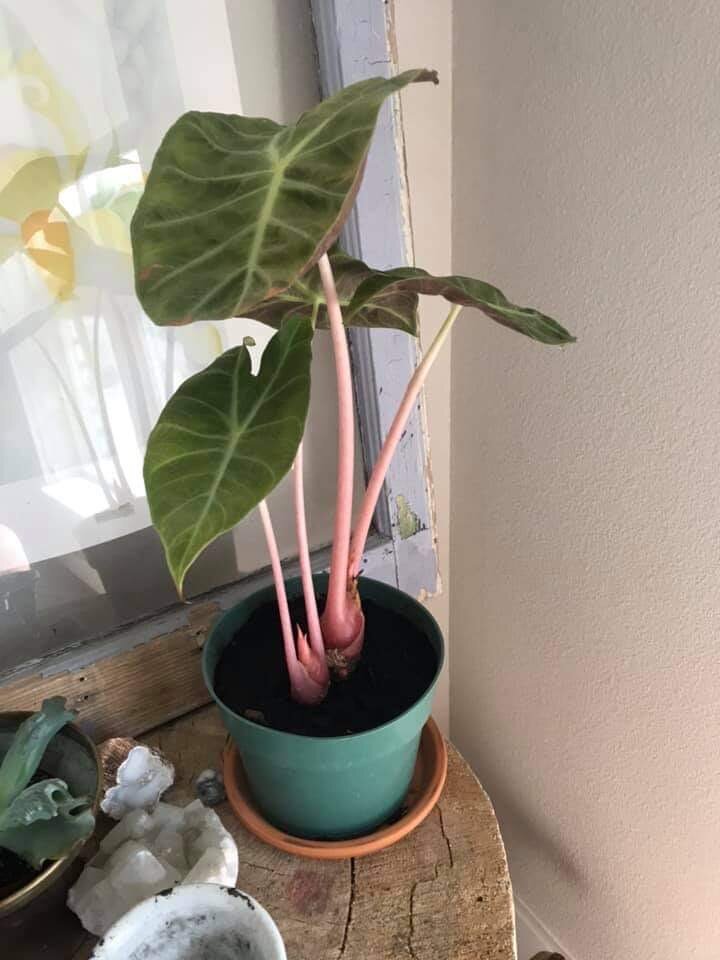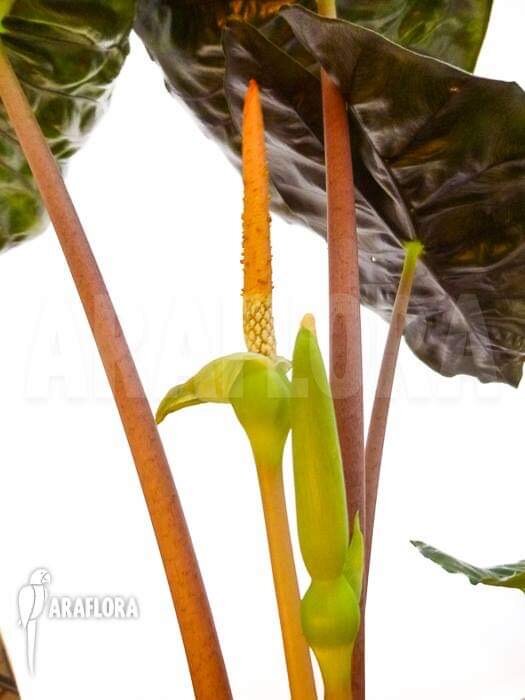ALOCASIA ‘AURORA’
Unknown Parentage
PARENTAGE: Unknown | Undescribed species or natural hybrid
HYBRIDIZER: N/A
VARIEGATED FORMS: N/A
DESCRIPTION:
Alocasia ‘Aurora’, also known as Alocasia ‘Pink Aurora’, is believed to be an undescribed species or a natural hybrid that was bought at the Bangkok Flower Market and brought back to the US, where it became the parent of the entire ‘Safari Series’
A. ‘Aurora’ was not successful when it was first offered in the US in the early 2000s, but has since been rebranded as Alocasia ‘Pink Dragon’ in Europe, where it has become very popular.
As highlighted in the patents for the ‘Safari Series’ (see below), the abaxial side of Alocasia ‘Aurora’ leaves are green and matte, compared to the burgundy glossy abaxials of the hybrids, in particular that of Alocasia ‘Morocco’, which it is often confused with.
Alocasia ‘Aurora’ also has petioles that are darker and a more vibrant pink than Alocasia ‘Morocco’
Under greenhouse conditions, with a lot of light the abaxials are green with darker venation.
Under more subdued light, as one would find in the lower canopies of a rainforest, the abaxial side darkens to a deeper burgundy.
SAFARI SERIES:
The Safari Series was introduced by Marian Osiecki, and patented by Oglesby Plants International She is an exception as a horticulturist, having produced succesful hybrids in several plant families.
The Alocasias in the original ‘Safari Series’ were:
Alocasia ‘Ebony’ was later added to the series.
Unfortunately the first release of this series was not especially successful in the US, likely because they were so similar to one another. While there was an effort to select plants of the same vigor, size, visual appeal and ease of care, customers could not tell them apart (you'll still find people "correcting" the name of ‘Morocco’ and ‘Ivory Coast’ to ‘Pink Dragon’, even in the US, where ‘Aurora’ was never labeled with that name and where Aurora has not been available in over 10 years).
Oglesby reorganized the series by adding another hybrid, Alocasia 'Ebony', which features distinctive black petioles, while the others all have different shades of pink stems. They kept the two most distinctive from each other, Alocasia ‘Ivory Coast’ and Alocasia ‘Morocco’, and retired the remaining three. One can still occasionally find them offered by collectors who have continued growing the original plants.
REFERENCES:
Research by Robert McCracken





